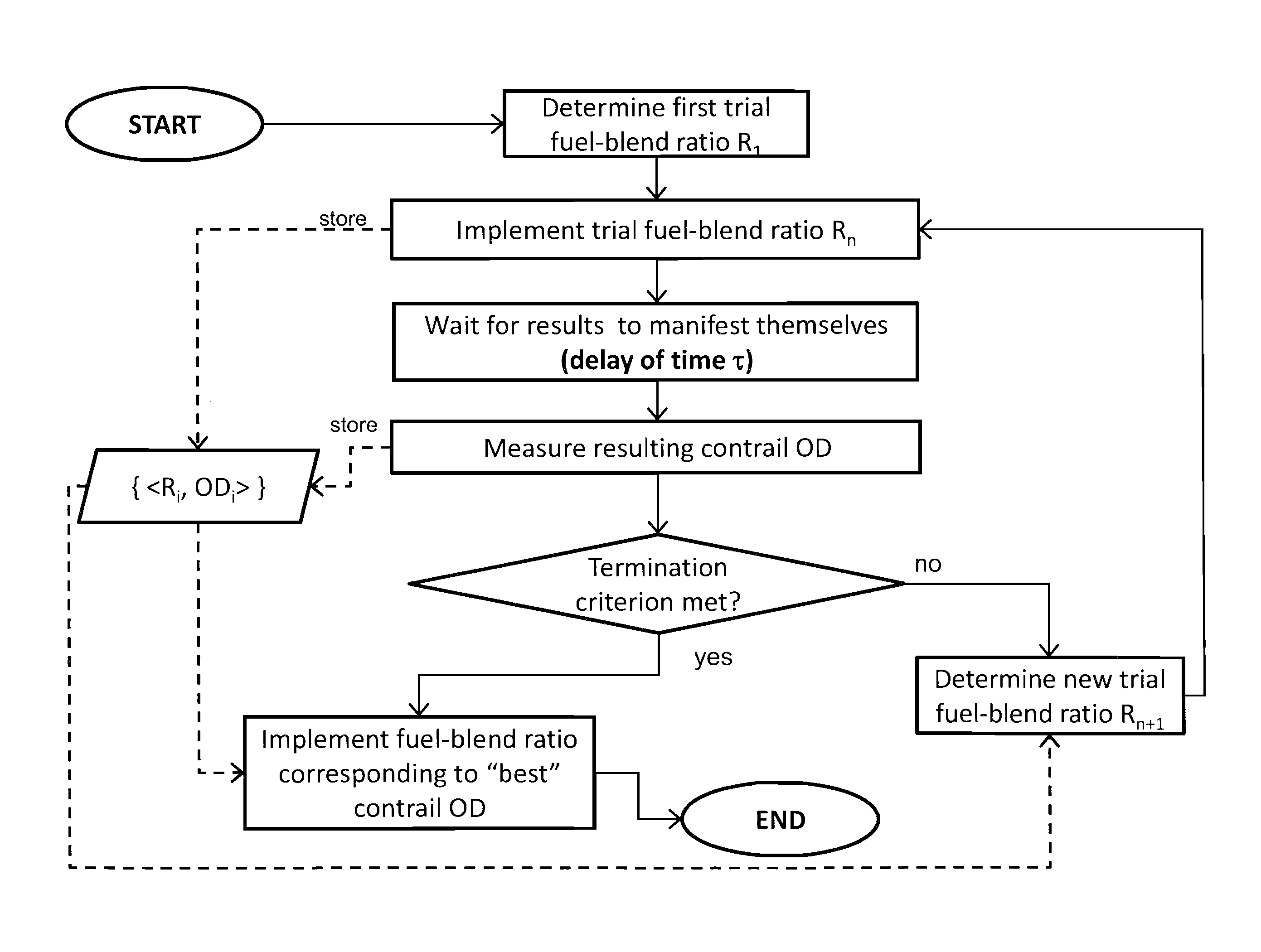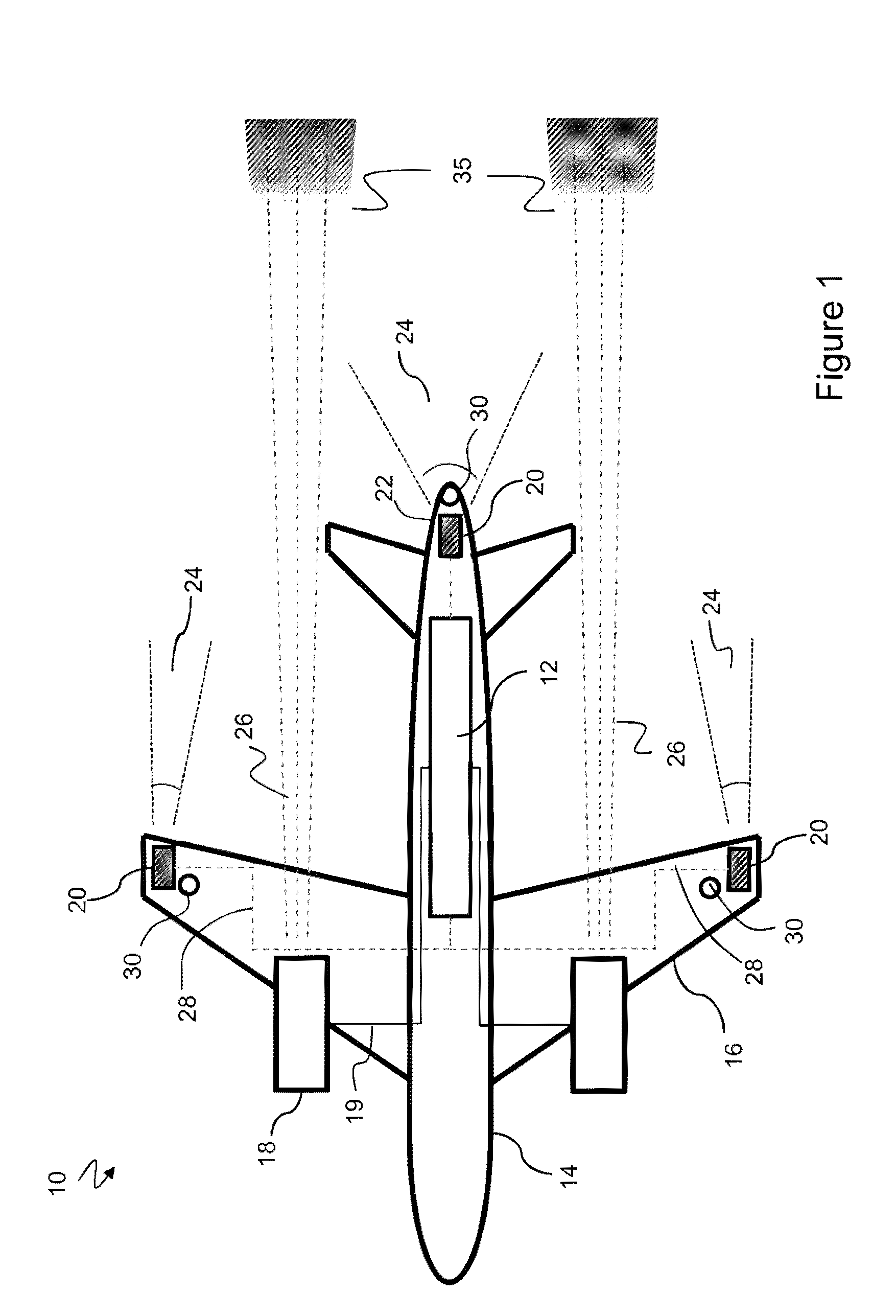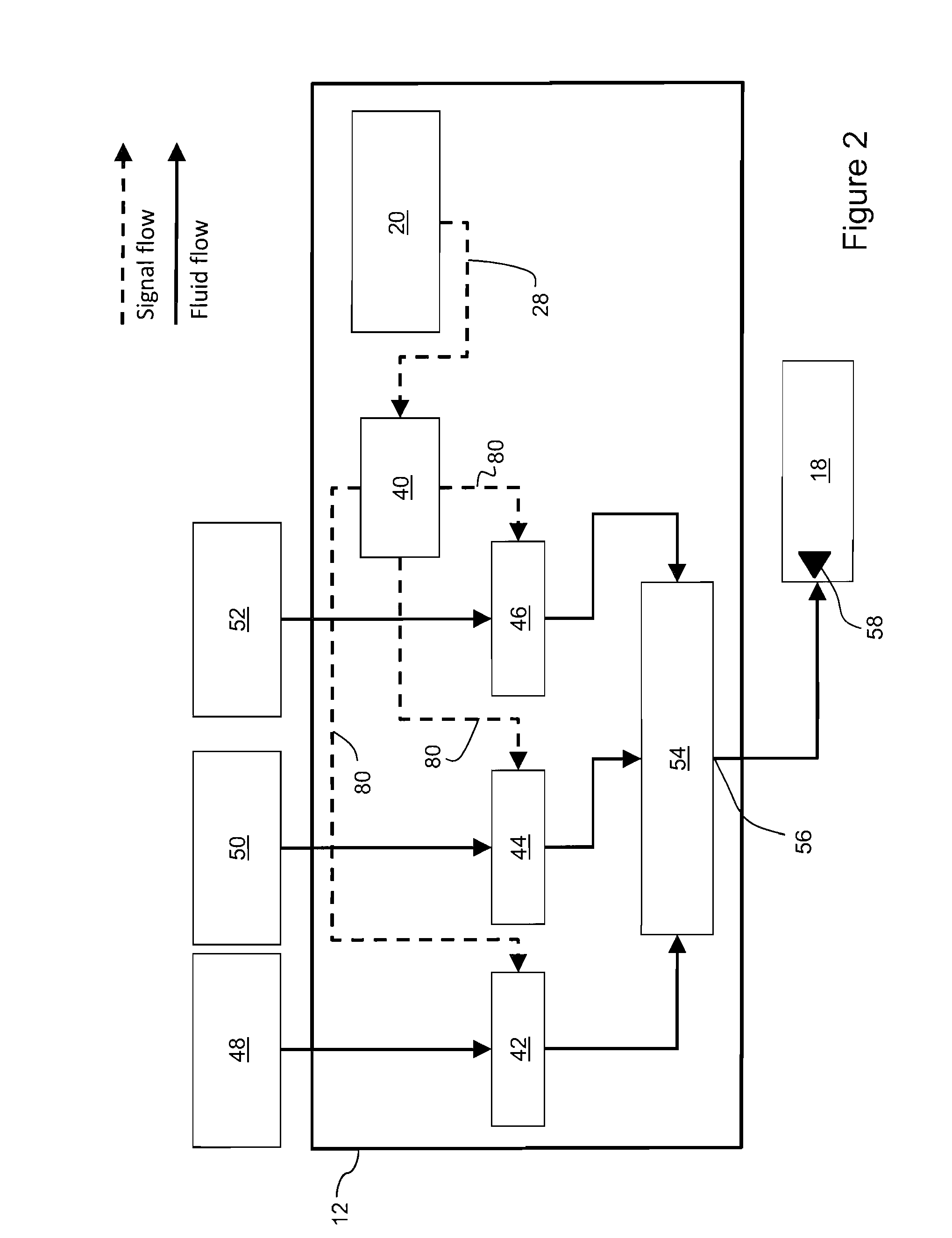Fuel delivery system
a fuel delivery system and fuel delivery technology, applied in the direction of efficient propulsion technologies, machines/engines, instruments, etc., can solve the problems of increasing the cost of fuel consumption, affecting the efficiency of propulsion technology, and introducing significant weight into the engine, so as to reduce the optical depth of the contrail
- Summary
- Abstract
- Description
- Claims
- Application Information
AI Technical Summary
Benefits of technology
Problems solved by technology
Method used
Image
Examples
Embodiment Construction
[0046]FIG. 1 shows a machine 10, in this example an aircraft, which comprises a fuel system 12 according to the present disclosure. In the example shown the aircraft comprises a fuselage 14 from which wings 16 extend, with engines 18 mounted to the wings. Other examples might involve alternative aircraft configurations, and different numbers of engines. The majority of the fuel system 12 is shown located in the fuselage 14. In alternative examples the fuel system 12 may be located elsewhere in the machine 10. Fuel pipes 19 fluidly connect the fuel system 12 and engines 18.
[0047]The fuel system 12 comprises at least one vapour trail detection sensor 20. In the example shown in FIG. 1, vapour trail detection sensors 20 are mounted towards the rear of the aircraft 10 facing aft. For example they are located at the tip of one or both wings 16 and / or at a trailing edge 22 of the fuselage. The, or each, vapour trail detection sensor 20 is mounted such that it has a field of view directed ...
PUM
| Property | Measurement | Unit |
|---|---|---|
| volume | aaaaa | aaaaa |
| temperature | aaaaa | aaaaa |
| humidity | aaaaa | aaaaa |
Abstract
Description
Claims
Application Information
 Login to View More
Login to View More - R&D
- Intellectual Property
- Life Sciences
- Materials
- Tech Scout
- Unparalleled Data Quality
- Higher Quality Content
- 60% Fewer Hallucinations
Browse by: Latest US Patents, China's latest patents, Technical Efficacy Thesaurus, Application Domain, Technology Topic, Popular Technical Reports.
© 2025 PatSnap. All rights reserved.Legal|Privacy policy|Modern Slavery Act Transparency Statement|Sitemap|About US| Contact US: help@patsnap.com



